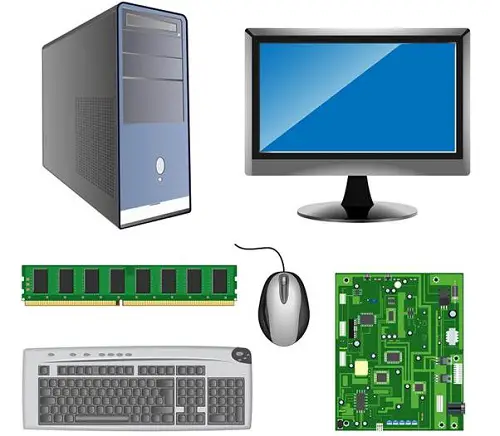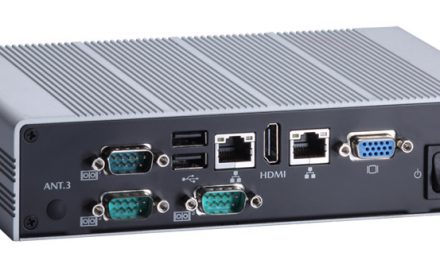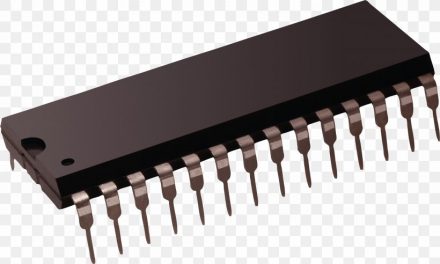Let us first start off by breaking down some terms here. A computer is a device or set of devices that is used to collect, process, store, and retrieve data. That is the simplest definition of a computer. A computer system would then be a framework of hardware and software working together towards a specific goal or set of goals. The term ‘system’ entails that there are inputs, processes and outputs involved. What then are the components that constitute a computer system? That is the focus of this article i.e. laying them out and explaining them.
Basically, a computer system is comprised of six components (you could call them units too). These are the input component, the storage component, the output component, the central processing component (commonly known as the central processing unit – CPU), the arithmetic and logic component (commonly known as the arithmetic and logic unit -ALU) and the control component (control unit – CU). It is important to know that the number of components can vary depending on how one chooses to describe a computer system. For example, some can incorporate the ALU and control unit under the CPU. So do not wonder about that, what is important is that everything is included.
Table of Contents
Input Unit / Input Devices
The input unit is responsible for the transmission of input data or signals from external devices. This is done by input devices. The computer communicates with the input devices on where the data has to go and what has to be done to it and so on. The input unit also plays a role in the conversion of input data into machine-readable format. Remember that computers only recognise binary language or code. You could say that the input unit accepts data or signals and converts them into machine-readable format for subsequent processing. Your keyboard and your mouse are common examples of input devices. The array of input devices is so broad anyways – it even includes devices like scanners, readers, cameras and the like. This is an important component of computer systems.
Storage Unit
Ordinarily data once it is input is either stored for safekeeping or later retrieval or for subsequent processing. It is the storage unit that is responsible for carrying out this data storage role. Essentially the storage unit stores data or signals for 3 main purposes. One, after data or signals are input pending processing. Two, after data or signals have been processed pending retrieval. Three, data or signals being processed pending further processing. In order to understand this unit better let us talk about random access memory (RAM); most of you are familiar with the term. RAM is a volatile kind of memory which is lost if power is cut off. There is also what is called read-only memory (ROM). The storage unit is responsible for managing these different types of memory and the associated storage devices. This is an essential component of computer systems.
Output Unit / Output Devices
The output unit handles the retrieval of data or information. If you look at in a certain way, the output unit simply does a reversal of what the input unit does. You will recall that during input the data or signals are converted to a machine-readable format. Here, the output unit, after data processing has been done, converts the binary code to a format that you can recognise and read. Data or information can be retrieved in soft copy form or hard copy form. The dynamics involved in any retrieval of data or information are handled by the output unit. The output unit is the one that communicates with output devices whenever data has to be retrieved. Common examples of output devices are your computer’s monitor or a printer. Output unit an important component of computer systems.
Central Processing Unit – CPU
Microcomputers, which are the most common type of computers, are based on microprocessor chip technology. This means that one computer functions based on a single microprocessor chip – which is considered to be the CPU. You could even say it is the heart of the computer because it controls everything. It controls processes and even manages any connected devices. When dealing with computers there are logic-based operations and other mathematical or computational operations at play. It is the CPU that handles all that.
The CPU works by acting on instructions communicated to it. For instance, when you click ‘Print’, a print job (i.e. an instruction) is relayed to the CPU which then establishes contact with the printer. Just for your information, the latest laptops now come with what is called an APU – an accelerated processing unit. It combines the CPU and the GPU (graphics processing unit or chip). Interestingly, some term the CPU as the combination of the ALU and CU but we shall discuss them separately herein. The CPU is an important component of computer systems.
Arithmetic And Logic Unit – ALU
You probably guessed it right – this unit handles arithmetic and logic-based functions or processes. Arithmetic refers to any processes requiring addition, subtraction, division and multiplication amongst others. Then the logic element deals with logic operations or processes involving comparisons and the like. Earlier we spoke about handling and execution of instructions or signals – that is what the ALU is for. All the logic-based functions or processes along with the arithmetic processes we just highlighted are aimed at managing instructions. The ALU is an important component of computer systems.
Control Unit – CU
It is all about control really; the control unit is solely responsible for keeping things in check. Computer operations or processes entail sending, receiving and execution of instructions. This has to be done adhering to various protocols, sequences, and checks, just to mention a few. It is the role of the control unit to oversee all that.
This is quite elementary and serves the purpose of giving you an appreciation of which components make up a computer system. We can really go deep down with each and every component because there is a lot and even more complex details involved. As much as computer systems or models vary, you will see that these are the 6 basic and universal components of a computer system.




